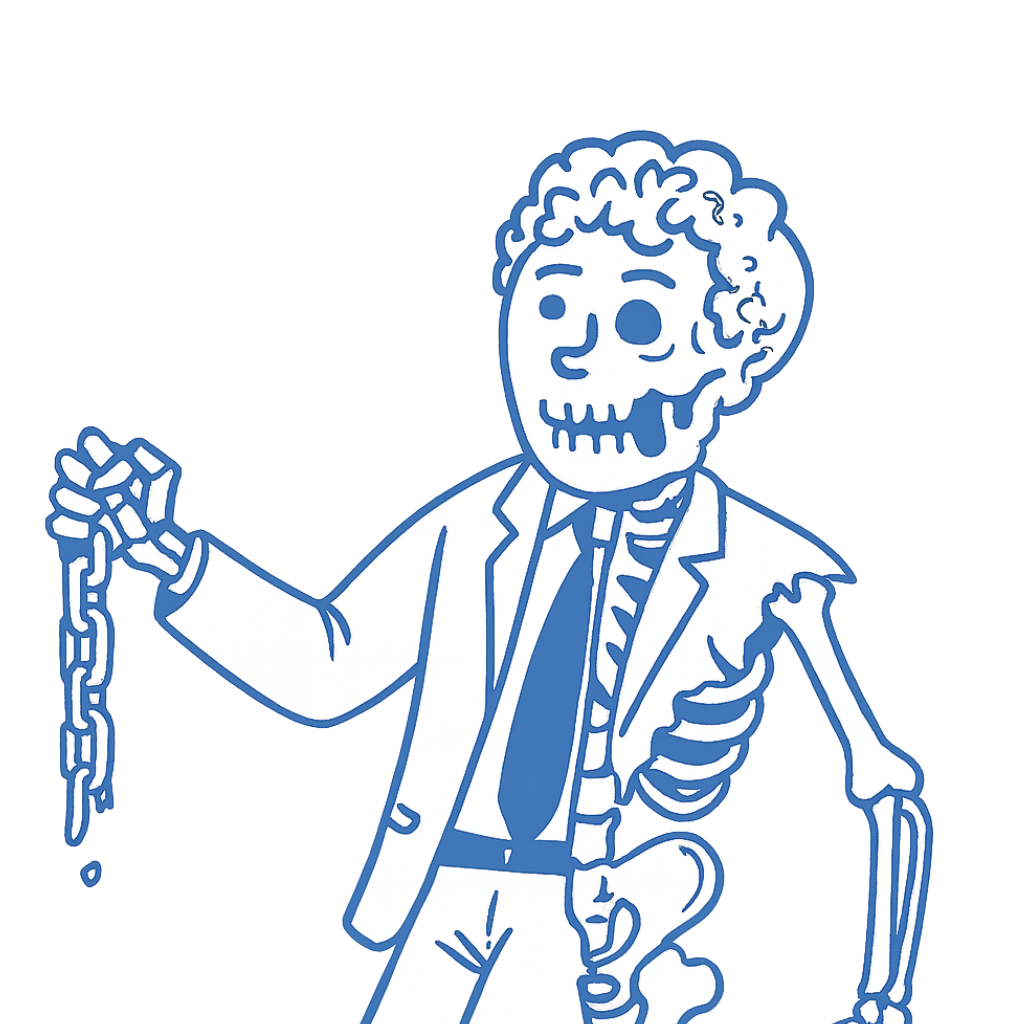Table of Contents
- Google is rapidly testing SERP features—over 48% aim to retain users on the platform.
- Zero-click searches and Gen Z search behavior are reshaping organic traffic potential.
- Building brand mentions in AI results, social, forums, and traditional media is now crucial.
- Digital PR tactics like original research and expert commentary can future-proof visibility.
- Organic traffic success now demands cross-channel brand visibility—not just SEO alone.
I visited Google Search Central in NYC last week and felt energized about the power of PR.
While most of the conference clarified recent actions, like site reputation abuse, one section discussed the partnerships the search team is making to adapt to the changing search landscape.
Here it is below:

The funny thing is that, as SEOs, we take what Google tells us with a grain of salt. What they say they are doing doesn’t always match what research from SEOs tells us they are doing.
But, in this instance, they are finally addressing the issue head-on.
Traditional methods of targeting top-funnel keywords and using that to drive traffic are no longer working (look at what happened to Hubspot).
Google tells us that “past success on Search may not guarantee future success.”
I’ve transcribed the key points below, indicating the direction Google is heading.
- Google is testing new SERP features more frequently.
- At least 48% of these features favor keeping users on Google (vs. sending them to sites).
- Google is saying that traffic patterns may fluctuate.
- They also say that past success on Search may not guarantee future success.
- Build a brand with digital PR tactics like unique data studies.
Consistent Testing, SERP Will Evolve
In the graphic’s first two points, Google sets the stage for brands getting fewer clicks.
On the one hand, they are making changes that benefit users and giving them quicker access to the knowledge they want.
Either way you look at it, there are a lot of changes going on in the SERP, and many of them are taking away your clicks.
For example, their rental feature may take away clicks from rental sites:
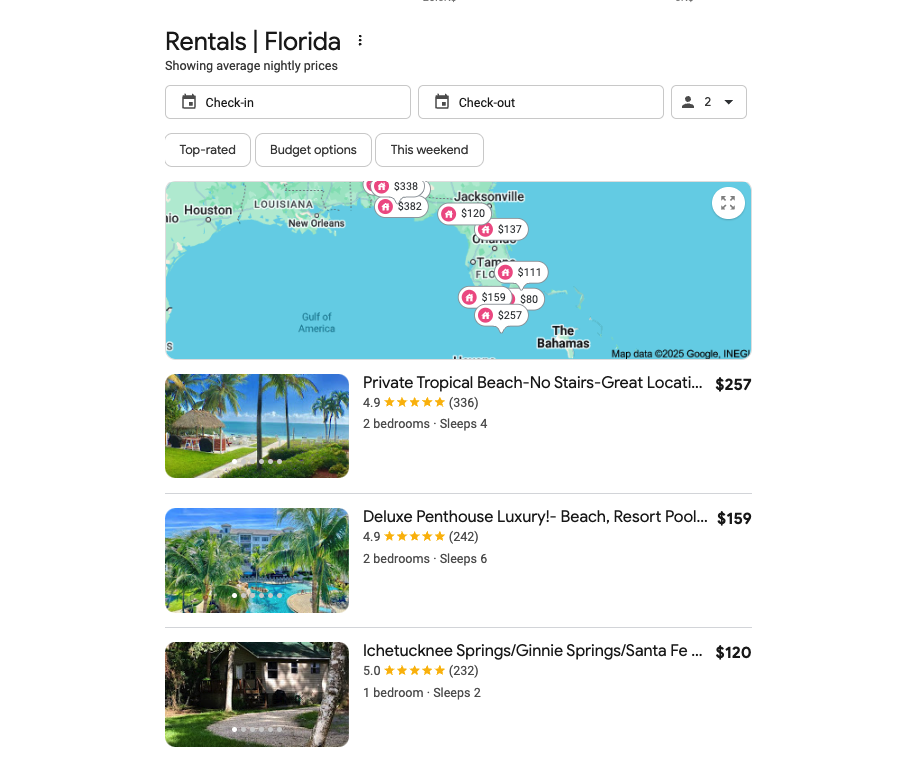
Google has close to 40 distinct SERP features at the time of publication. These include things like:
- Featured Snippets
- People Also Ask (PAA)
- Knowledge Panels
- Local Pack (Map Pack)
- Top Stories
- Image Pack
- Video Results
However, as they said in bullet #1 from their slide, Google continually tests new features.
So, let’s take a deeper look at these changes.
What SERP Features Are Changing?
Search Engine Roundtable reports on most movements of these SERP features in their newsletter.
But to better understand the patterns of change, I looked at Brodie Clark’s timeline of SERP features.
Here is the timeline mapped out based on the frequency of the changes:
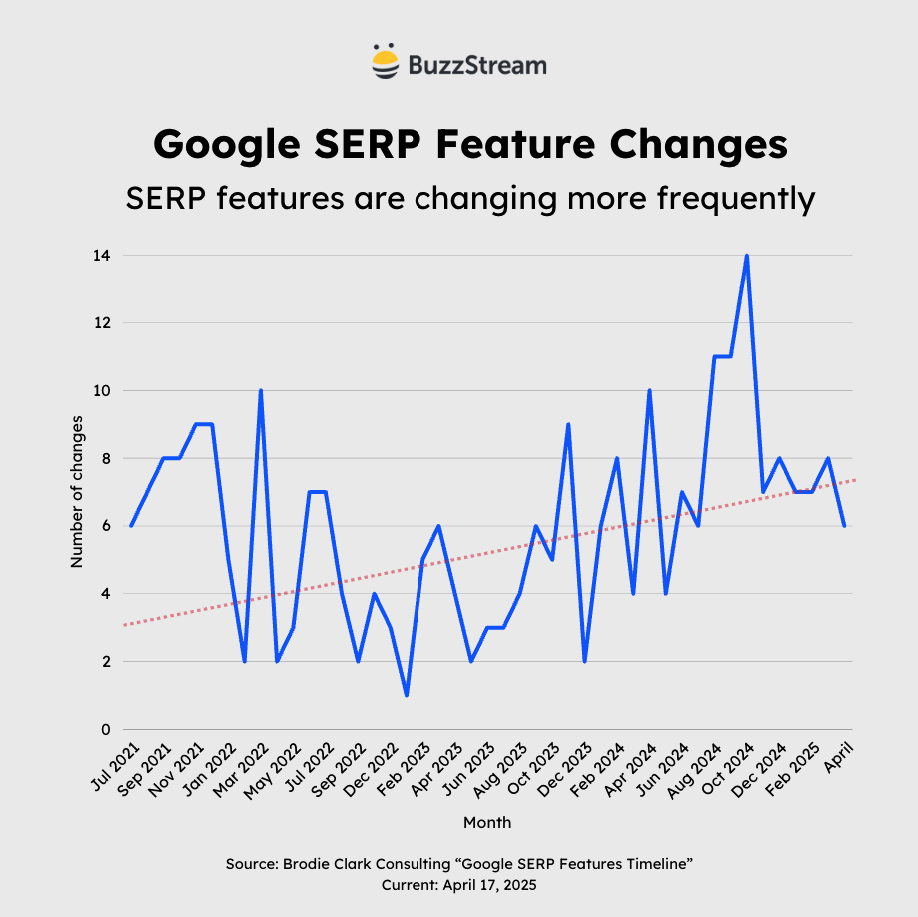
As you can see, the changes (as reported by Brodie Clark) are getting more frequent over time.
However, this doesn’t show the full impact on brands because some of these features actually drive clicks to brands.
So, I took Brodie Clark’s list and attempted to categorize them into four categories:
- Keeps Users on Google – these are features that seem to focus on answering queries or satisfying user intent without needing to leave Google (AI Overviews, Knowledge Panels)
- Drives Clicks – These features help users navigate to a product, page, or site. (Sitelinks, Share Link)
- Minimal UX Changes – These layout changes shouldn’t impact whether a user stays or goes. (Bold text)
- Mixed Impact (Hard to say one way or another)
Here’s what I found:
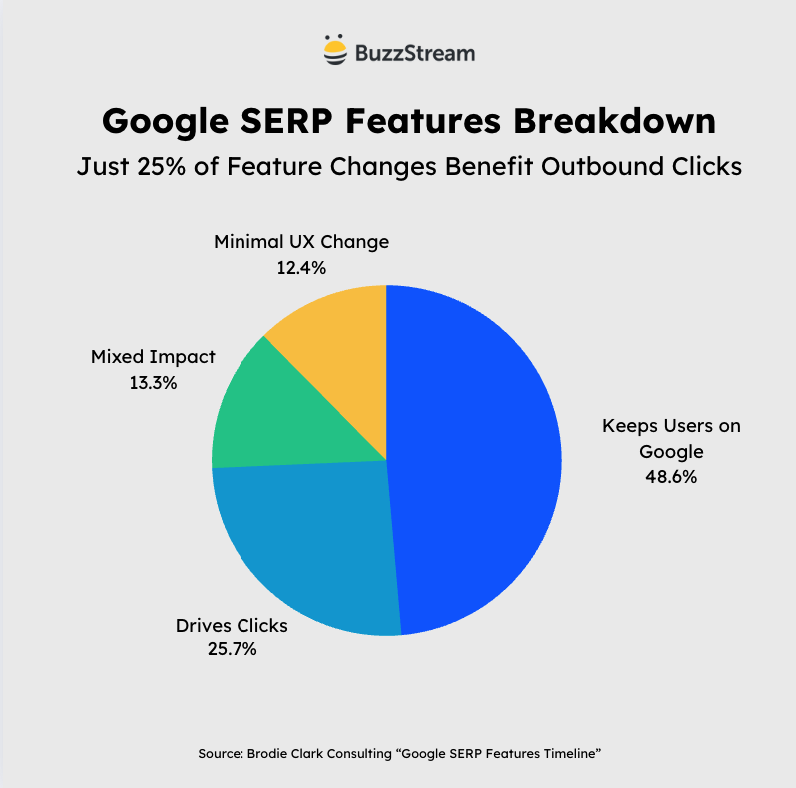
As you can see, only 25% of the changes appear to benefit outbound clicks.
Again, it’s crucial to note that this data is limited to Brodie Clark’s frequency of reporting and my categorization of what these changes do (which I’m happy to share).
However, the more information they give without even needing to do another search, the less potential your brand has to show up and get clicked.
Next, let’s look at bullet three:
Solving for Multiple User Needs, Which Are Always Evolving
Aside from UX changes and SERP features, Google has been fundamentally changing how it thinks about serving content to users through its latest Core Updates.
They do this through SERP features and the content they serve.
Meeting User Needs With SERP Features:
Let’s take a look at a SERP for “digital PR”.
First, we have an AI Overview, which was new last year, that helps answer the query immediately.
Large sponsored ads also take up much space to serve users who want to hire an agency.
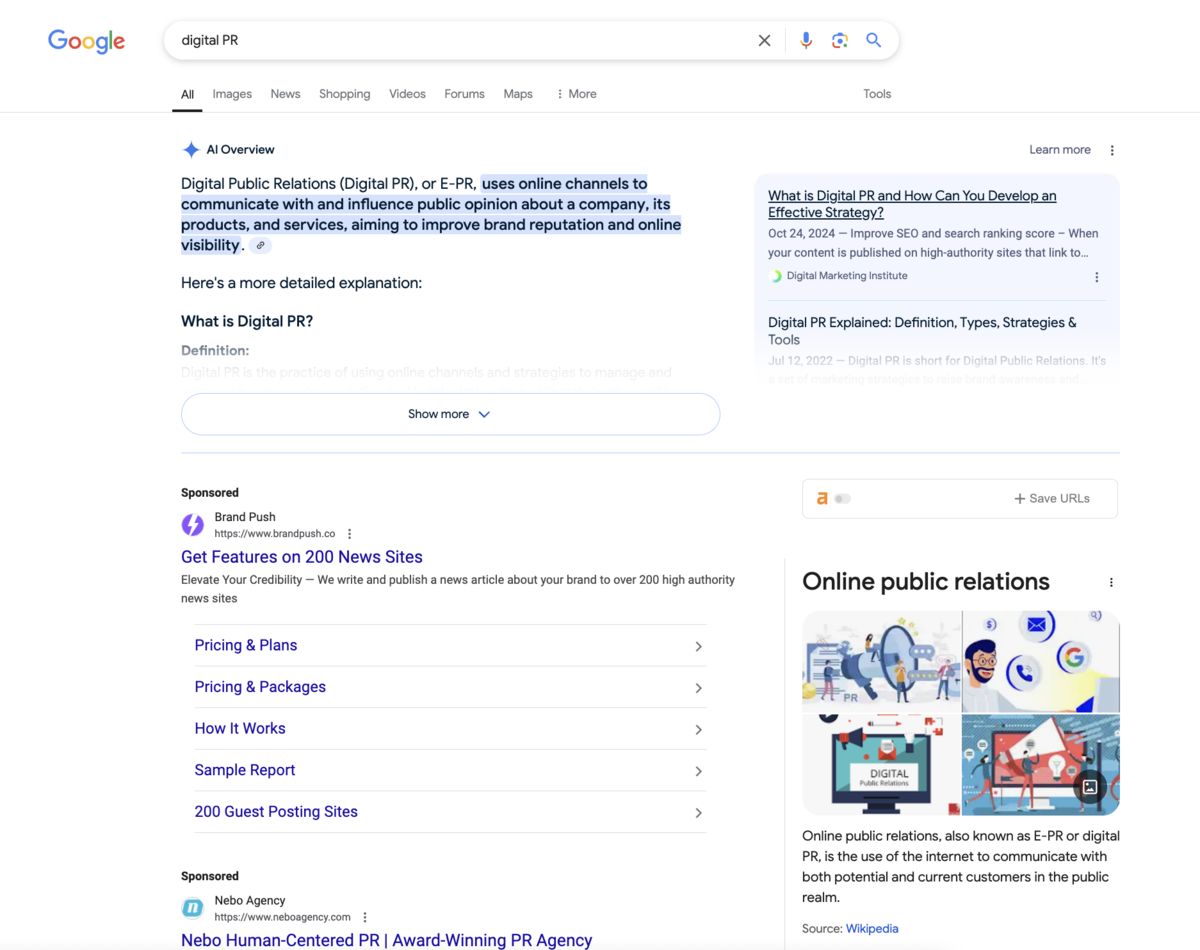
A Knowledge Graph on the right also explains “Online public relations,” with a quick snippet from Wikipedia.
Finally, we see an organic result from Digital Marketing Institute:

Then, there is a People Also Ask section, which serves people looking to answer a potentially more detailed question about the search query.
Then we see a few more informational posts.
Then, there is a new SERP feature called “What people are saying,” which helps bring insights from social media platforms.
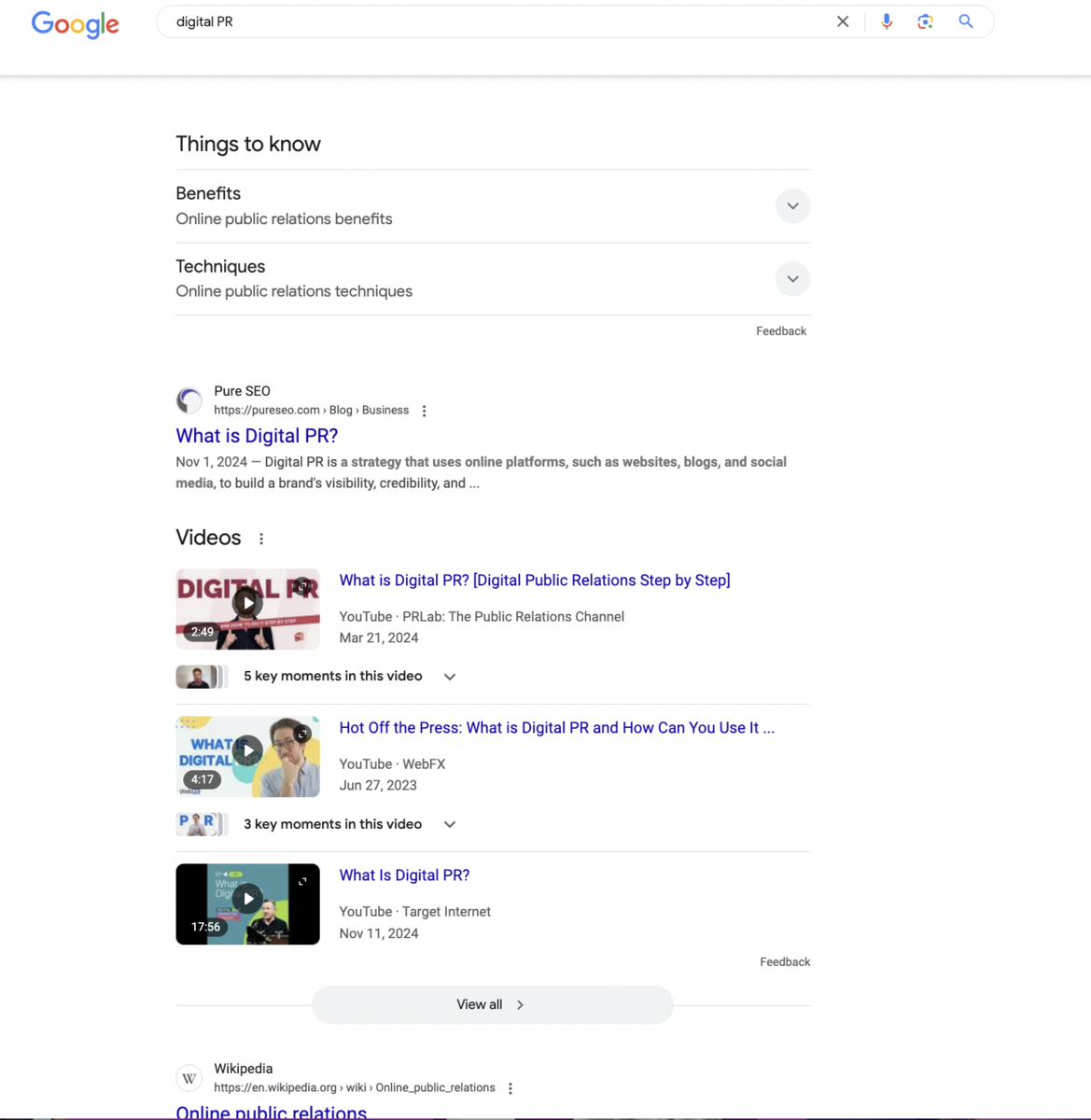
Then, there is a Things to know dropdown menu, which further answers queries and keeps users on the page.
Last is a video pack to help users who might want a video result for this query.
In all of these cases, they are trying to give users better solutions to the problems they may need to solve.
Solving at the Query Level
As you can see in the slide below, their machine learning technologies are helping them:
- Get better results for longer tail queries (RankBrain)
- Connect complex concepts in queries (MUM)
- Understand how topics and words all fit together (Bert)
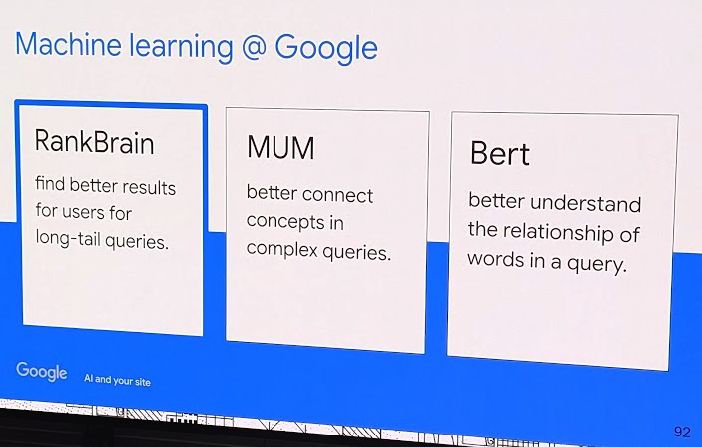
So, instead of matching keywords like “Japan hiking tips,” MUM understands that a user might want to know about preparation, gear, or weather conditions.
Ultimately, with these fluctuations, Google admits that organic traffic to your site may not be as predictable as it once was, which is the last bullet in their slide.
Traffic Patterns May Fluctuate
The last bullet on Google’s slide reads:
“Traffic Patterns May Fluctuate: Long-held traffic patterns are likely to fluctuate, creating new opportunities for all sites. Past success on search may not guarantee future success.”
There are a few reasons for these traffic pattern fluctuations.
Zero-click Searches
We are already seeing “zero-click searches,” which means that when users search, they don’t interact with any of the results at all.
Many of these may be due to users getting what they want from what they see on Google SERPs.
One of Sparktoro’s recent studies, they found that zero-click behavior accounts for about 37% of searches.
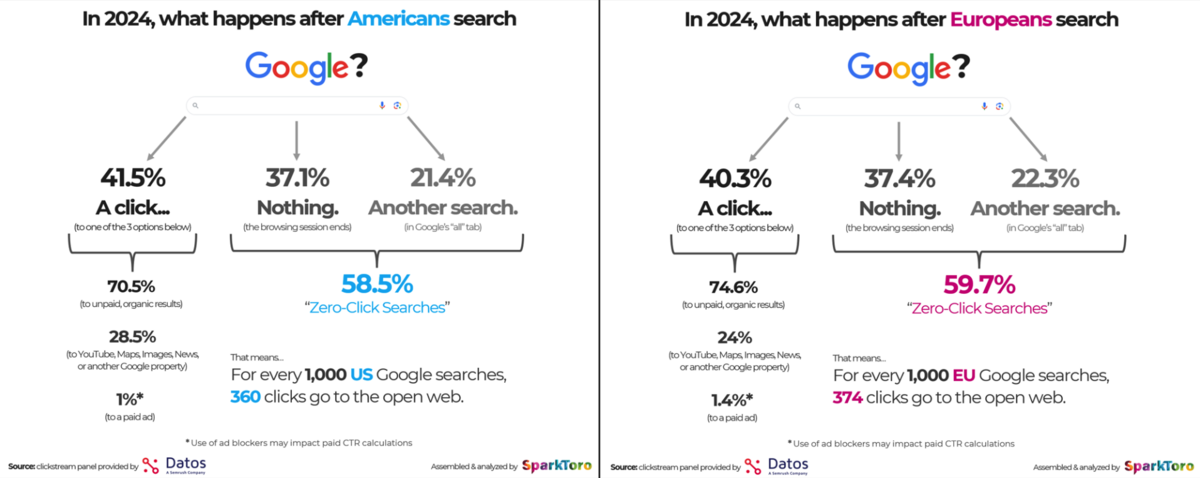
But, before you get your pitchforks and head to Google’s office, remember that they are just trying to match users’ needs.
Consider the other factors changing how users search.
Young Searchers Are Moving Off Google
A study from Forbes Advisor saw that 46% of Gen Zers prefer using social media to search over Google.
GWI saw that almost 52% of Gen Z used social media as a primary search engine.
If we broaden the scope to all brands, just 53% of Americans trust search engines like Google, according to a study from PageOnePower.
So, we are seeing this shift in how users get their information and find brands.
As marketers, we need to meet that shift.
How?
Build a Brand with Digital PR
As users change how they search, and Google changes how it delivers information, marketers need to adapt.
As Nathan Gotch said in our podcast, links are still important, but they are becoming a smaller piece of the puzzle.
Now, you need to consider how your brand is mentioned across all avenues of your audience’s journey.
Here are some ways to do that.
1. Get Your Brand Mentioned In AI
You could try to get yourself mentioned in AI results. Many of the main LLMs used high DR publishers to curate their datasets.
So, there is evidence that PR can help you get mentions in these high-DR publishers and show up in the ChatGPTs and Google Geminis of the world.
And many of these AI technologies now have data partnerships with major publishers, as we mapped here:
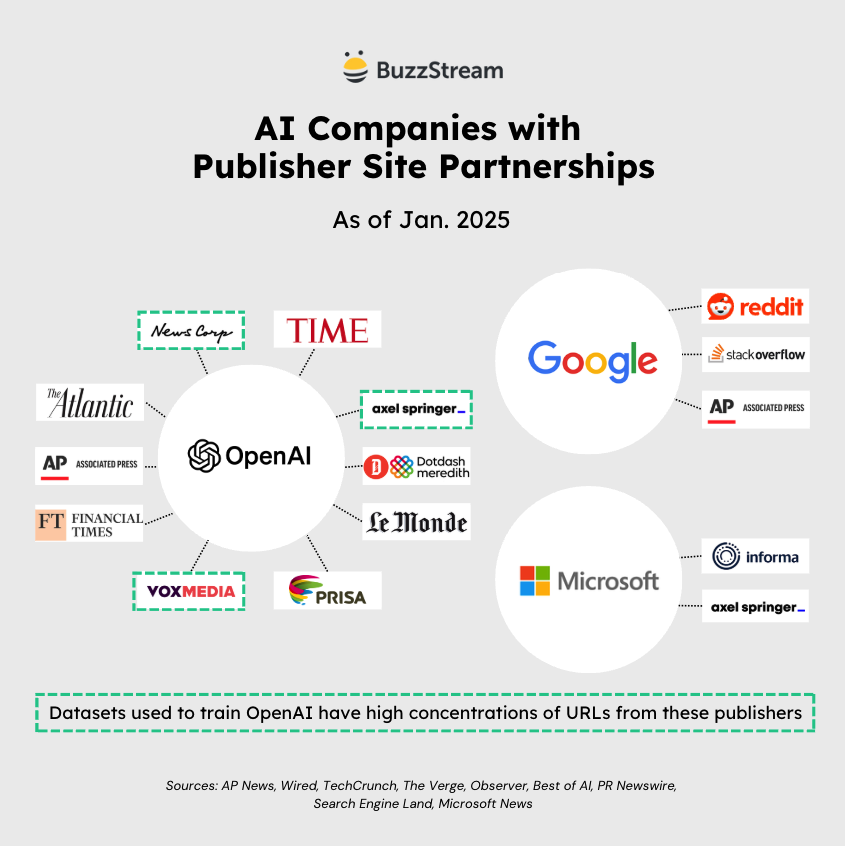
Do this by creating data-driven content and promoting it (digital PR).
LLMs need new data.
Passive link building is one of the best all-encompassing solutions that can bring in relevant links and get your brand mentioned on some of these high-authority sites that LLMs are using for their data.
With a little push of outreach, this content can create a flywheel that continues to bring in links.
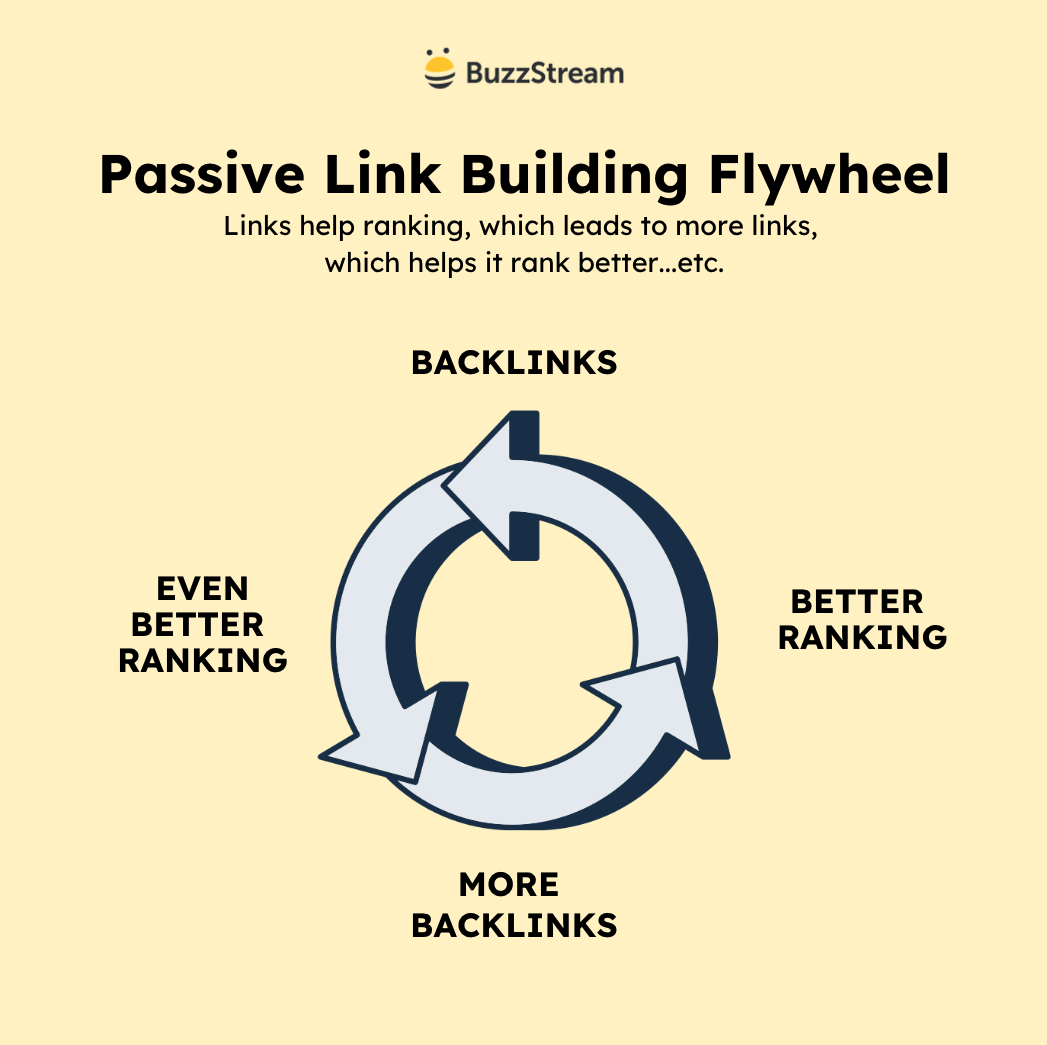
And getting links can still help you rank, which will get you in front of Google search users.
Our link building statistics post and digital PR statistics posts are examples of these.
With these, we can get into LLMs:
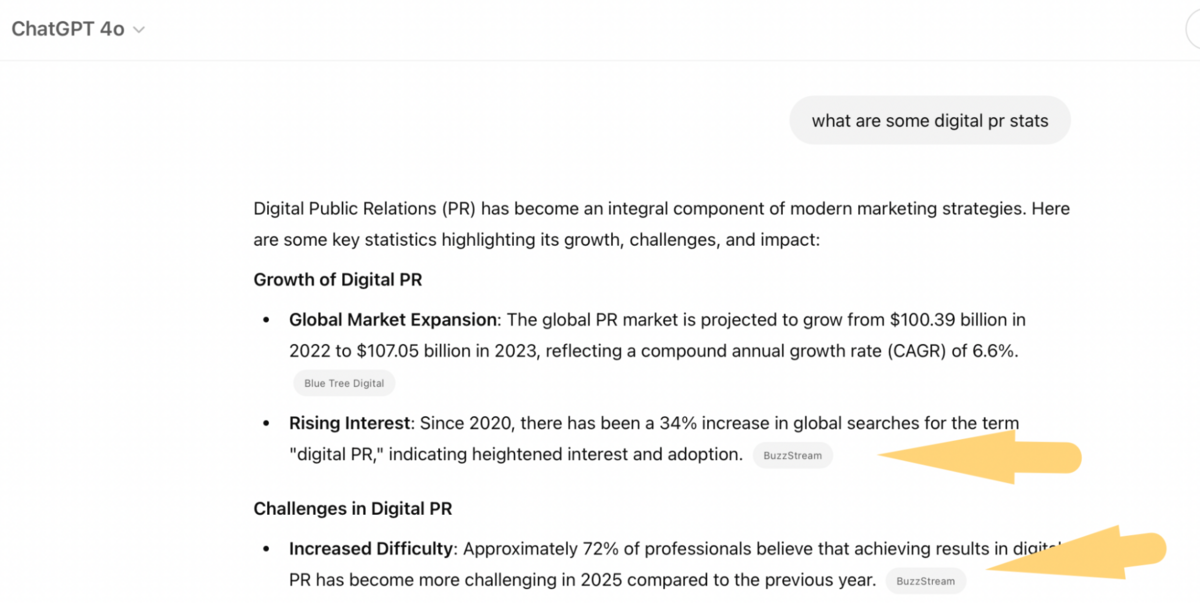
And we’ve seen a slow increase in ChatGPT traffic.
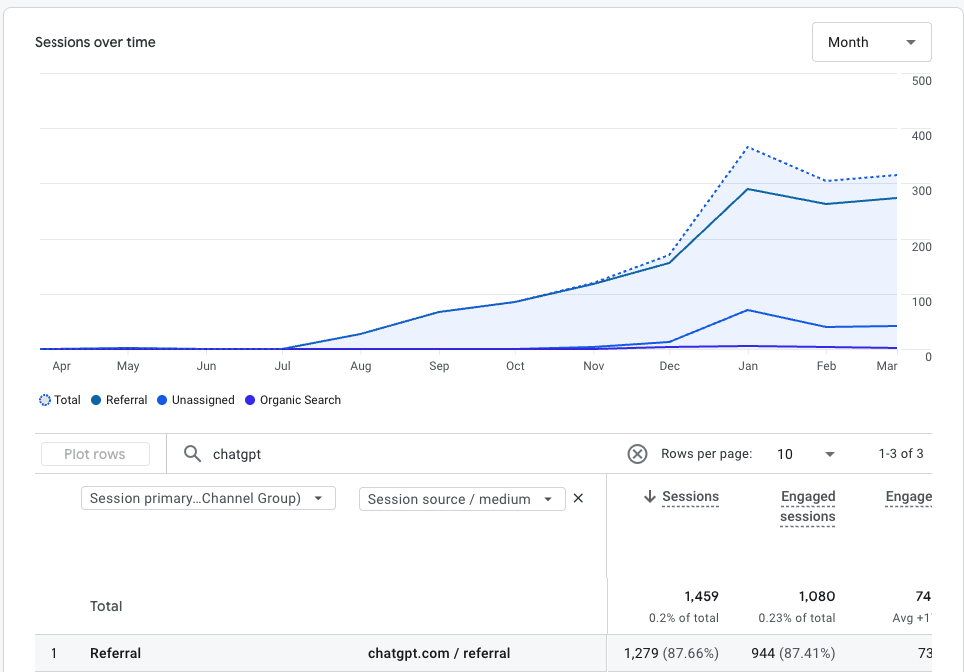
It’s still small, but it’s one way to get your brand in front of users.
2. Build Data-Driven Stories
When done well, data—driven stories give you a unique story to tell and can get your brand mentioned in industry news sites.
Why? Because journalists love data-driven stories.
Cision’s State of the Media Report showed that original research reports are the second most sought-after kind of content that journalists want from PRs.
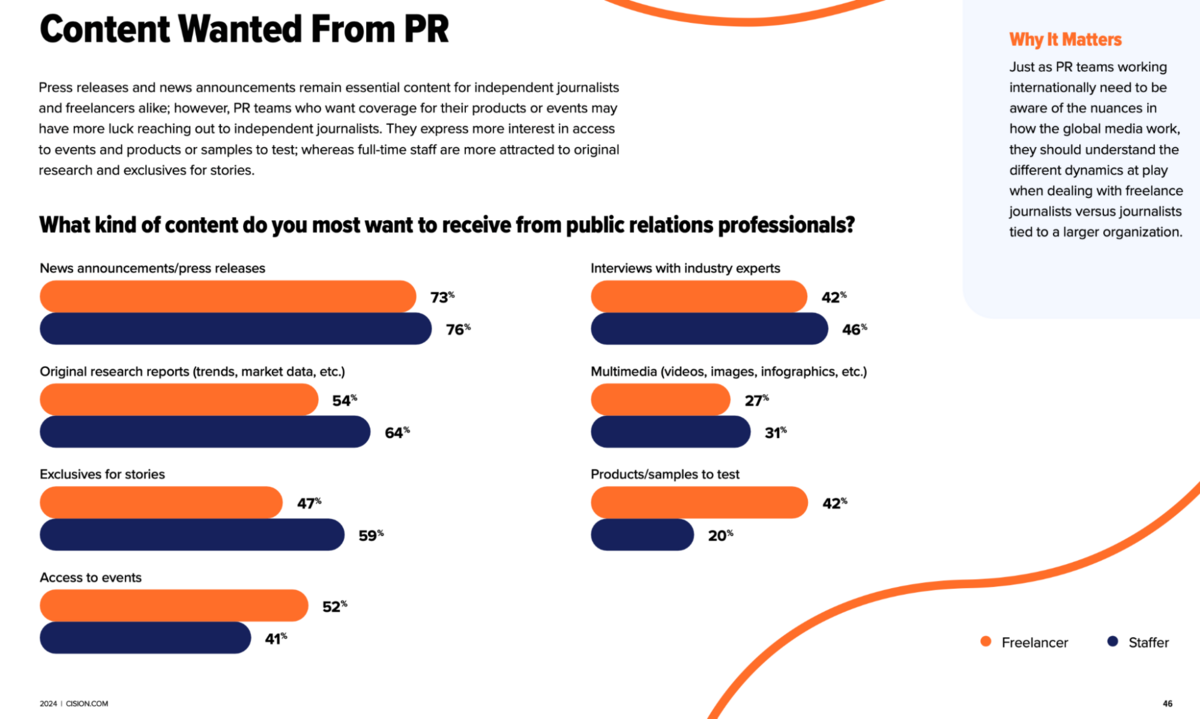
Our State of Digital PR Report is a real-life example of this.
This fresh data exists nowhere else and provides a story journalists can tell.
It can also get repurposed into other content (like the aforementioned statistics posts).
We’ve written extensively about some of these tactics, including creating and pitching city index studies and survey posts.
In some cases, these kinds of studies can get you mentioned in local news, even for seemingly dull industries.
Here’s a survey-driven post that got media coverage for a construction equipment rental company that got talked about on major local news networks:

But, there are ways to get into news outside of just data-driven stories.
3. Put Yourself Out There as an Expert
Another resource that journalists like is expert commentary.
If you’re in the UK, you can respond to #journorequests. Otherwise, you can look to Qwoted, Featured, and Source of Sources.
These platforms are used by journalists to connect with experts.
Here’s a look at Qwoted for instance:
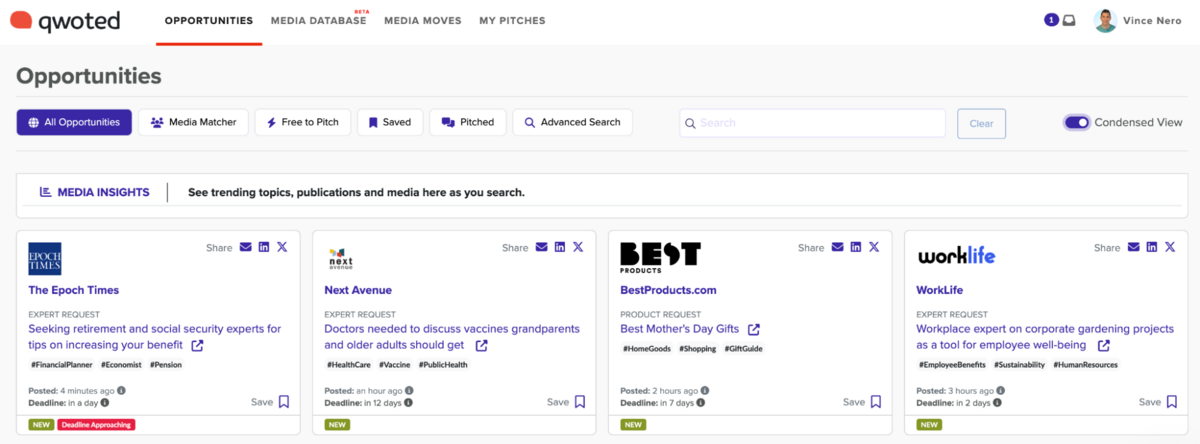
Responding to them can get you featured on top-tier news sites.
However, don’t limit yourself to news sites. Consider how younger users are searching TikTok.
4. Get Your Brand Mentioned in Social Channels
If users don’t find what they seek on a SERP or AI, they may search on social. Others may go directly to a brand that they remember via direct search.
For some great examples of digital PR campaigns that got coverage on social and the web, look no further than Ikea.
Here’s one they did recently to capitalize on the trending Apple TV show, Severance.
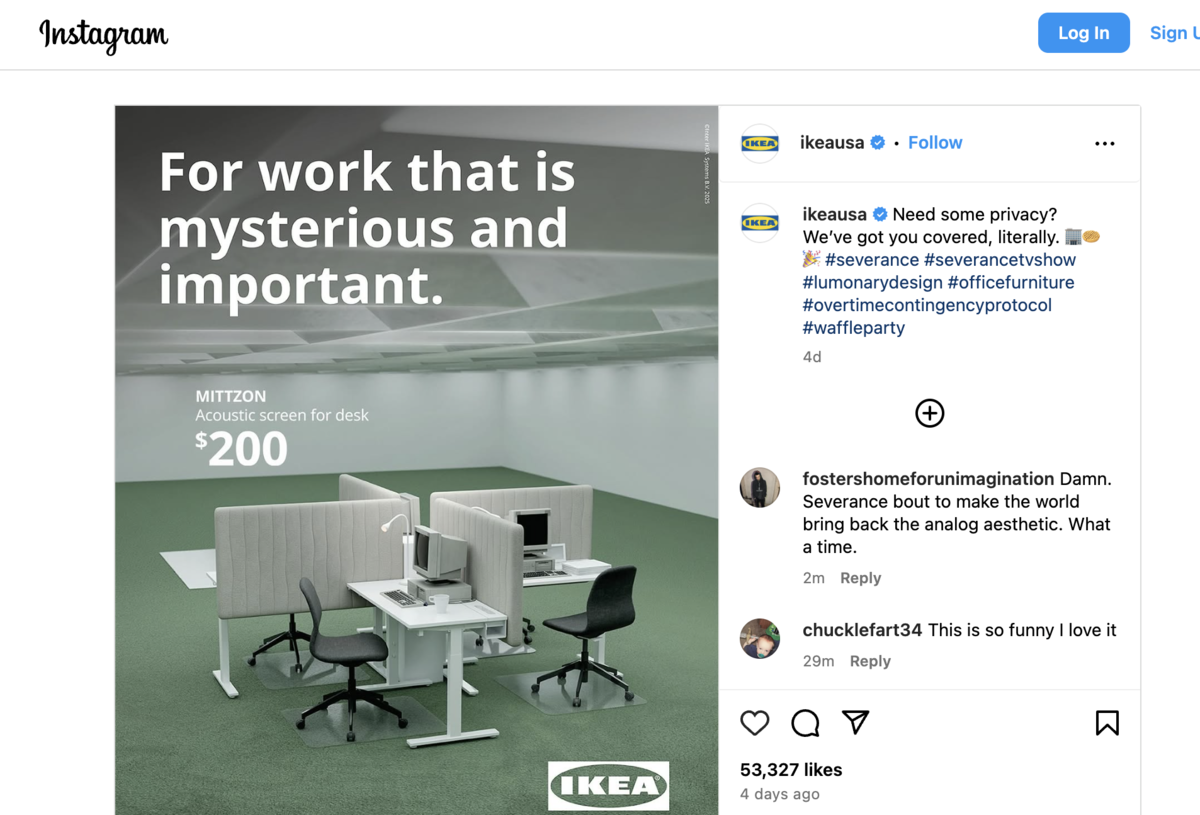
After trending on social, it got picked up on multiple news outlets.

Sites like Famous Campaigns or newsletters like The PR Insider provide great examples of these campaigns that expand to wider audiences..
5. Get Your Brand Mentioned in Online Forums
One of Google’s SERP features is the Forums tab:
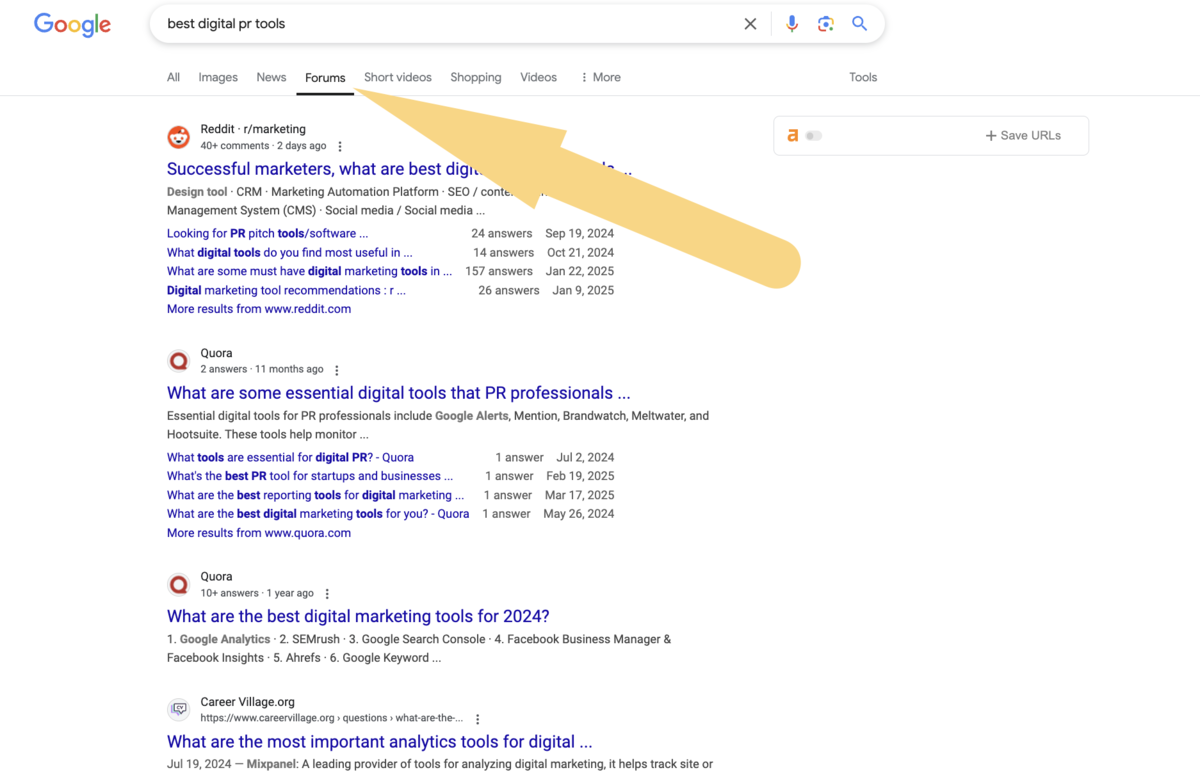
Forums like Reddit are some of the most popular areas outside of Google to get your content seen.
In 2024, Reddit saw over 39% increase in traffic in 2024 between showing up in the Discussion and Forums feature and in search results more frequently.
A lot of data pieces and visualizations do really well on these kinds of forums.
Lean into ones that can spark conversation.
One post from FinanceBuzz about fast food price inflation found itself trending on Reddit with over 12k upvotes.
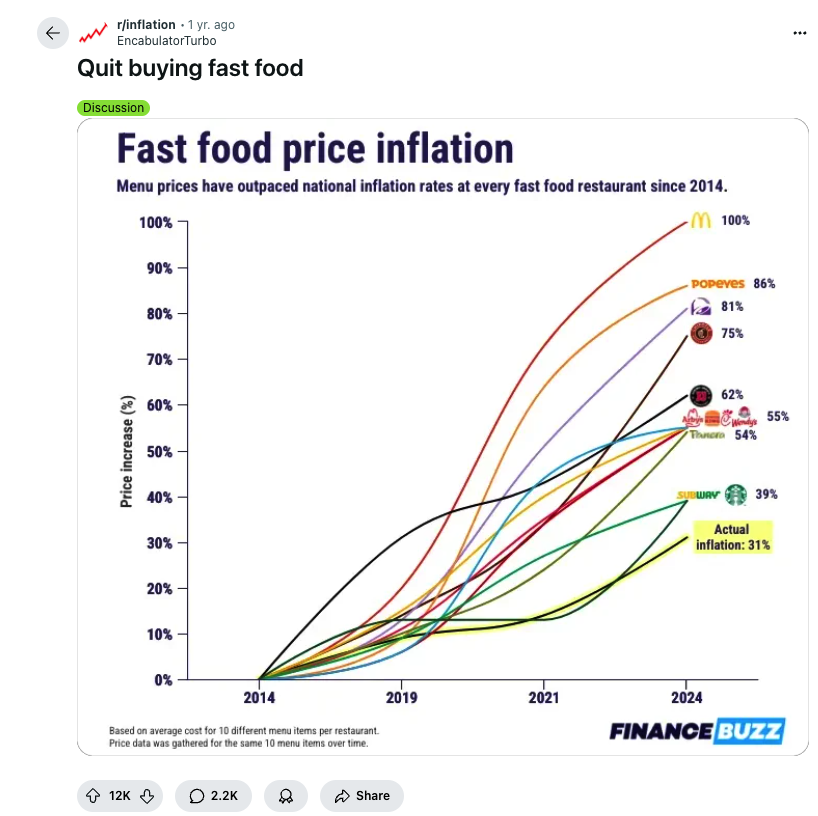
If you’re interested in learning more, I spoke extensively about this post with Chris Lewis of Launch Potato about how they did this.
Some agencies, like Neomam, even test content on Reddit to see how it performs before rolling out their full campaigns.
One piece I did for a client over 5 years ago still gets major play on Reddit on various threads.

The original post was posted back in 2017.
It wasn’t an original data post but it’s a highly informative visualization that gets cited multiple times on Reddit.
6. Think Local, Think Traditional
Even small, local brands can benefit from PR to combat potential losses in organic traffic.
The city index study is one way to attract local journalists.
But, you can also think more traditional PR methods like sponsoring events, or pop-up shops.
Here is a mention in Fox11 in Wisconsin about of pop-up shop events from local brands Renard’s Cheese and Uncle Mike’s Bake Shoppe that occurred around the time of the NFL Draft.
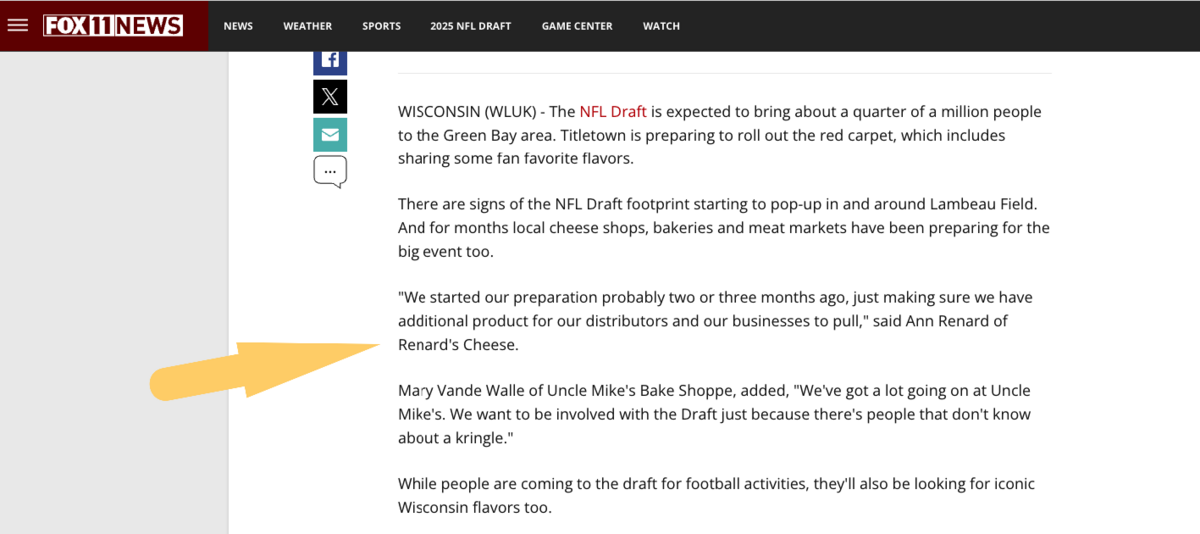
Everything from sponsoring little league teams, to 5K races can get you press mentions, backlinks, but more importantly, build brand affinity with local communities.
No, SEO Isn’t Dead
Hopefully, the takeaway from Google isn’t that SEO is dead. It’s alive but there are different areas.
As the SERP diversifies and user’s search preferences change, SEOs need to adapt.
PRs should be ready to work with marketing teams like social media, or brand and vice versa.
Google is telling us not to expect the same gains from search, so it’s time to prepare for the change.

 End-to-end outreach workflow
End-to-end outreach workflow



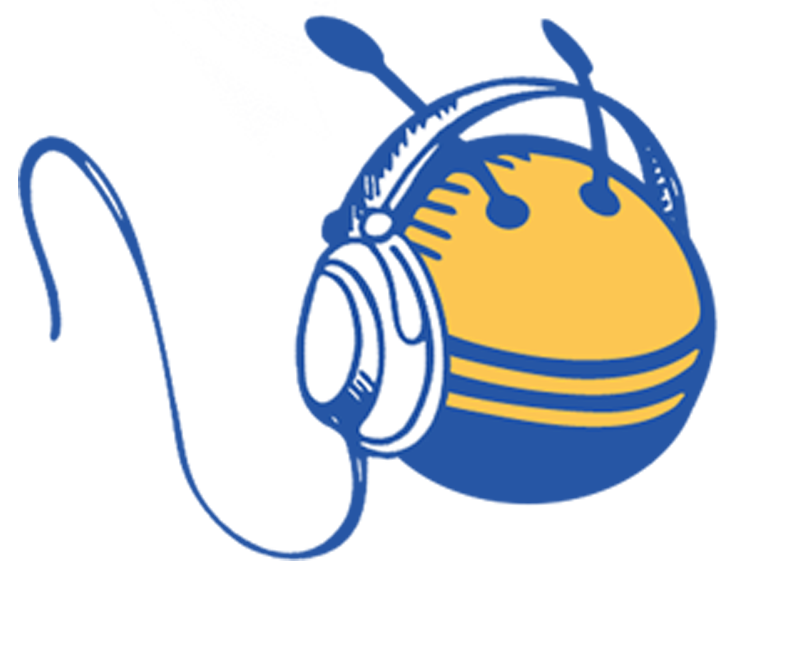 Check out the BuzzStream Podcast
Check out the BuzzStream Podcast

